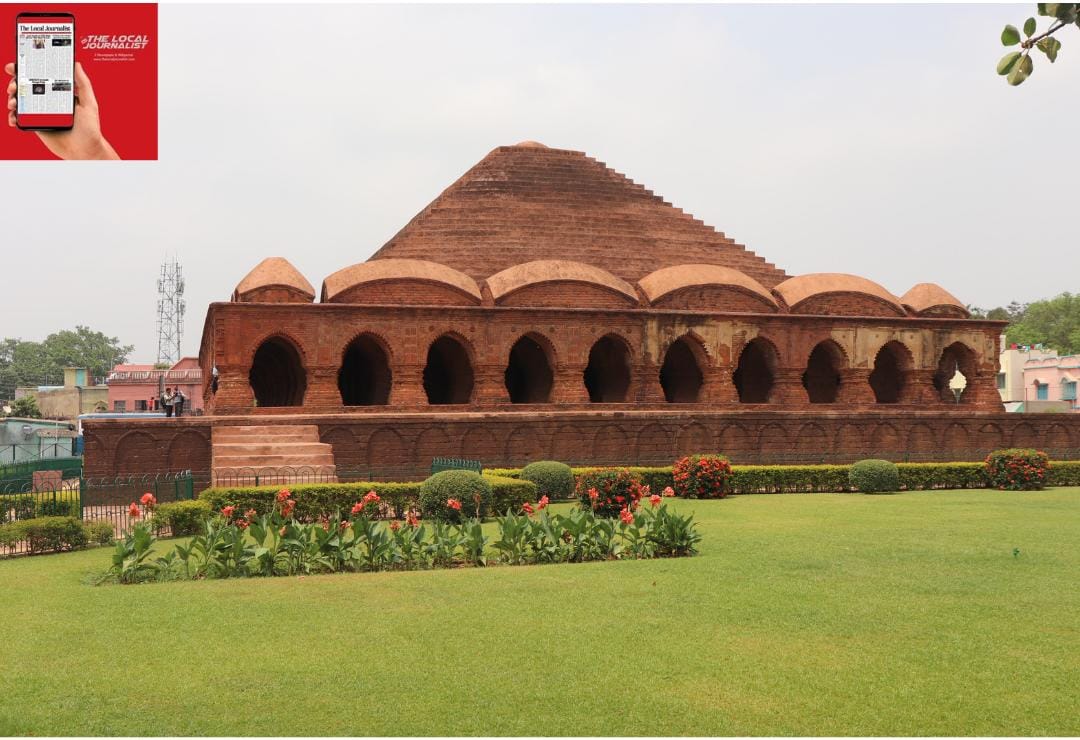
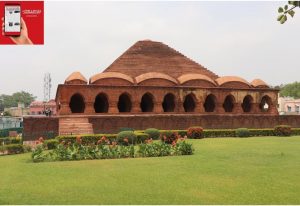
Rash Mancha
Rash Mancha ( রাসমঞ্চ) is an iconic and popular tourist site in the town built in 1600 CE by King Hambir Malla Dev of Mallabhum. It is perhaps the oldest brick temple in India and is also known as the “Pyramid of Bengal” for its roof. The structure is erected on a laterite plinth and looks magnificent till now. The temple is an impressive square structure with a small shrine in the center and three-corridor galleries with vaulted roofs enclosing above. Till 1932 Radha Krishna idols from Bishnupur were brought here during Vaishanva Rash Festival for citizens to worship. There are several large Malla period cannons in the temple premises, surrounded by a passageway and a beautiful garden
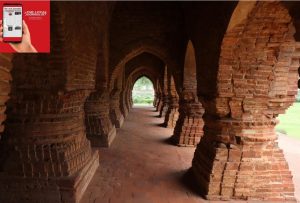
Rash Mancha corridor
The temple has sprawling three corridors and arched enclosures, a beautified garden around. There are a total of 108 entrances and the splendid terracotta carvings can be seen with naked eyes.
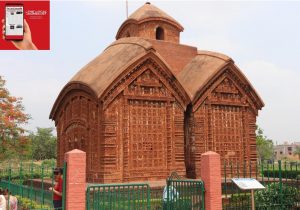
Jor Bangla Mandir
The Jor Bangla Temple was built by Malla King Raghunath Singh in 1655 and is also a famous tourist spot with ASI as the custodian. The temple has both historical and mythological significance as it’s believed Supreme Vaishnava God himself set up this site. Two skeuomorphic buildings in the meticulously constructed architecture represent the typical thatched huts seen in the area. These two huts are attached to one another and have a single tower above them, which gives the double-sloped roofs more support and stability. The entire temple is constructed on an elevated platform that is as high as a meter high with the use of laterite bricks. The square-shaped temple base is exquisitely decorated with clay panels depicting episodes from the Ramayana and the Mahabharata. Additionally, there are floral and geometrical motifs. Along with the terracotta pieces, the temple’s roofs have distinctively captivating ancient Chala architecture.
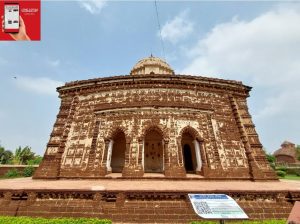
The well-known terracotta temple in Bishnupur, West Bengal, Radha Shyam Temple, is located 2 kilometers from Bishnupur Bus Station. It is one of the well-liked temples to visit in Bishnupur and is close to Jor Bangla Temple. The temple, which is devoted to Lord Krishna, was erected in 1758 CE under the rule of King Chaitanya Singha. The terracotta style of construction is well-known for the Radhashyam temple in Bishnupur. The square construction of this temple, which faces south, is topped by a single tower with a curved roof. The Radha Shyam Temple is located inside a walled area with a distinctive gateway design. The front and back surfaces of the doorway are beautifully carved in terra clay, primarily in flower designs.
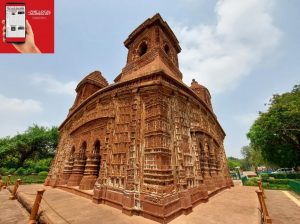
King Raghunath Singha constructed the Shyam Rai Temple, also referred to as the Pancha Ratna Temple, in 1643. This temple is devoted to Lord Krishna, just like the majority of the others in Bishnupur. The temple is a prime example of Pancha Ratna (Five Gems) architecture and is looked after by the Archaeological Survey of India. It is encircled by a lovely garden. This temple in Bishnupur has the most intricate carvings. It consists of an ambulatory pathway with a porch opened by three arches on each of the temple’s four sides and is supported by a small square plinth. This brick-built temple has a square roof with five towers atop it. While the other four towers are square in design, the central tower is itself octagonal. It consists of an ambulatory pathway with a porch opened by three arches on each of the temple’s four sides and is supported by a small square plinth. This brick-built temple has a square roof with five towers atop it. While the other four towers are square in design, the central tower is itself octagonal. Aspects of Lord Krishna’s life are depicted in intricate clay carvings that adorn the walls. The temple’s curved ceiling, which is unique among temples, is influenced by Islamic architecture.
